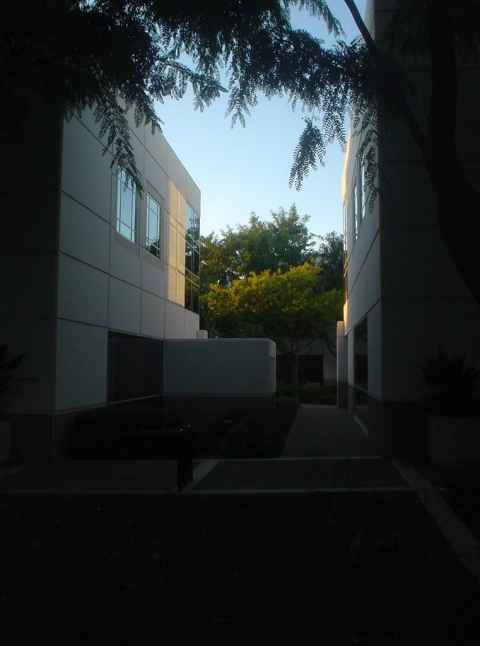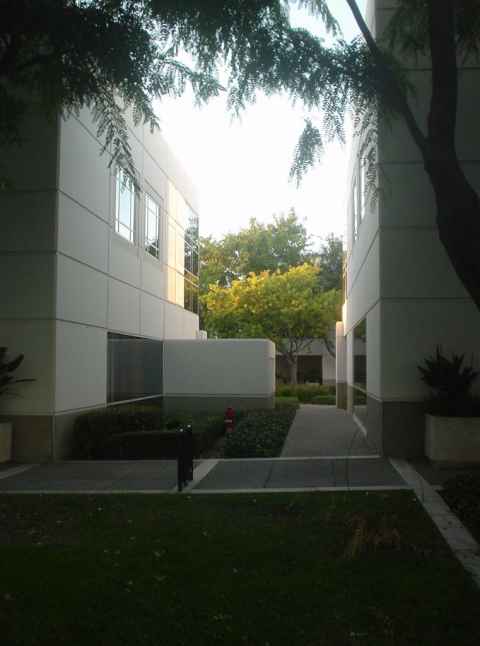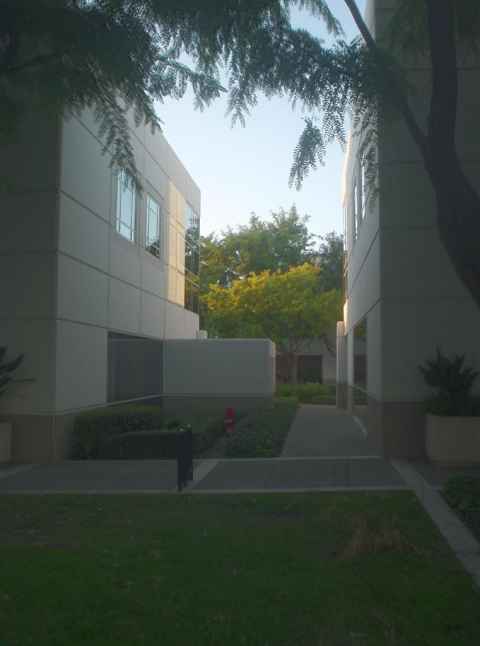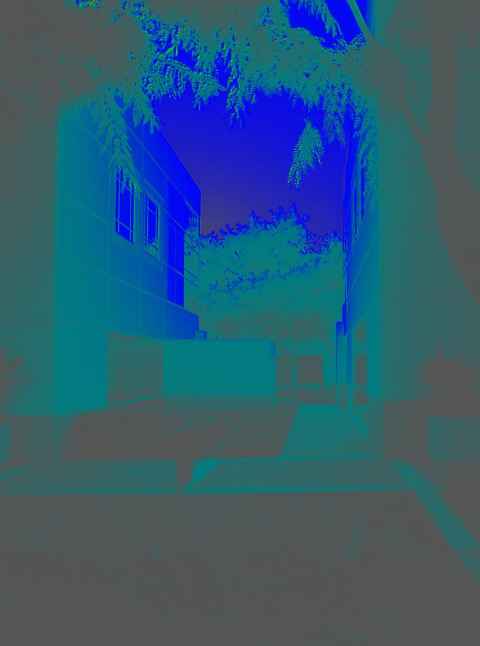High Dynamic Range Imaging
High Dynamic Range Imaging (HDRI) is when you work with images that can store a higher dynamic range (the difference between black and white) in the image than what is usually possible. For example, taking a picture of someone against the sun results in the person being reduced to a black silhouette. If you try to brighten the image you still don't get the person's features - that's because they've been squeezed out of the dynamic range of your image. Being so close to being black that, as far as the image format is concerned, they got rounded down to it.
My experiment consisted of taking three pictures outside my office. I took one pretty much straight into the sun, one aimed at the ground, and one inbetween. Then I made sure all three images overlapped as well as I could. Finally I ran a program on the three images that would, for each set of corresponding pixels in the input images, output a pixel that was the weighted average of the input pixels. The weight was assigned so that a pixel had maximum weight when it had exactly half of maximum brightness. The weight then dropped off exponentially toward black and white.
The results are below. The first three are the source images and the last two are the composite image followed by an image where the relative weights of the input images have been converted to intensities of blue, green and red, respectively.




